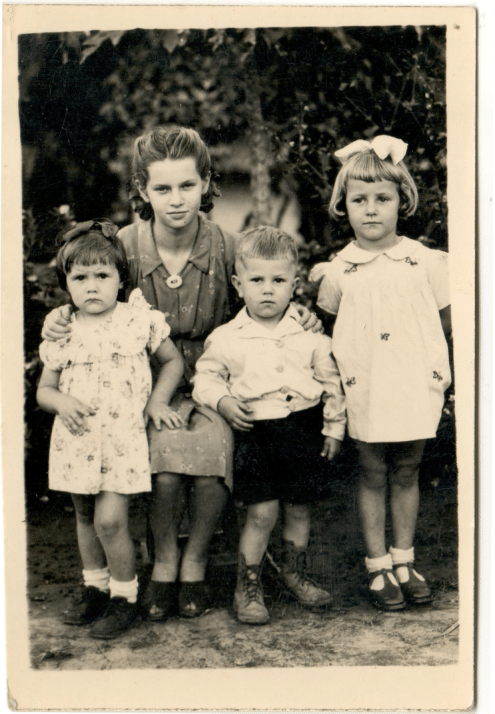
Between 1940 and 1941, the Soviets deported over one million Poles to Siberia where many were forced to work in labor camps. One survivor donated their memoir of that experience in sketches to the Center. Those deportations ended after the Nazi invasion of the Soviet Union in June 1941, which led to Poland officially becoming its ally. Soviet leader Joseph Stalin agreed to the release of tens of thousands of Poles who made their way to British-controlled Iran before moving onto other countries either as civilian refugees or to serve as soldiers. The memoir possessed by the Center also includes sketches of a British-run refugee camp. The British eventually transported some of those civilian refugees to its colonies in East Africa. Photos of the women and children who lived in the Koja camp in Uganda in the Center’s possessions are included in this exhibit. Meanwhile, the former inmates of Siberian labor camps who could fight made their way to Palestine to serve under the British armed forces in North Africa and later in Italy, most famously at the Battle of Monte Cassino. The Center possesses the uniform of one of the Polish soldiers who fought with the Polish II Corps at that battle. Some Polish men released from Siberia made their way to Britain in order to join the Allies’ fight against the Nazis. Four of the key battles in which Polish soldiers fought across Europe and North Africa are also commemorated in the flag donated by the Polish veterans in Boston. One of those was Chester Cholewa who settled in Holyoke after the war. He donated his journals recounting his wartime experiences, along with some photographs, to the Center. Chester Colewa was one of many Polish soldiers who the British government organized into the Polish Resettlement Corps after the war when Poles in Britain refused to return to communist-controlled Poland. This exhibit includes the British Service and Pay Book that belonged to Tadesusz Ceregra while he served in the Polish Resettlement Corps.